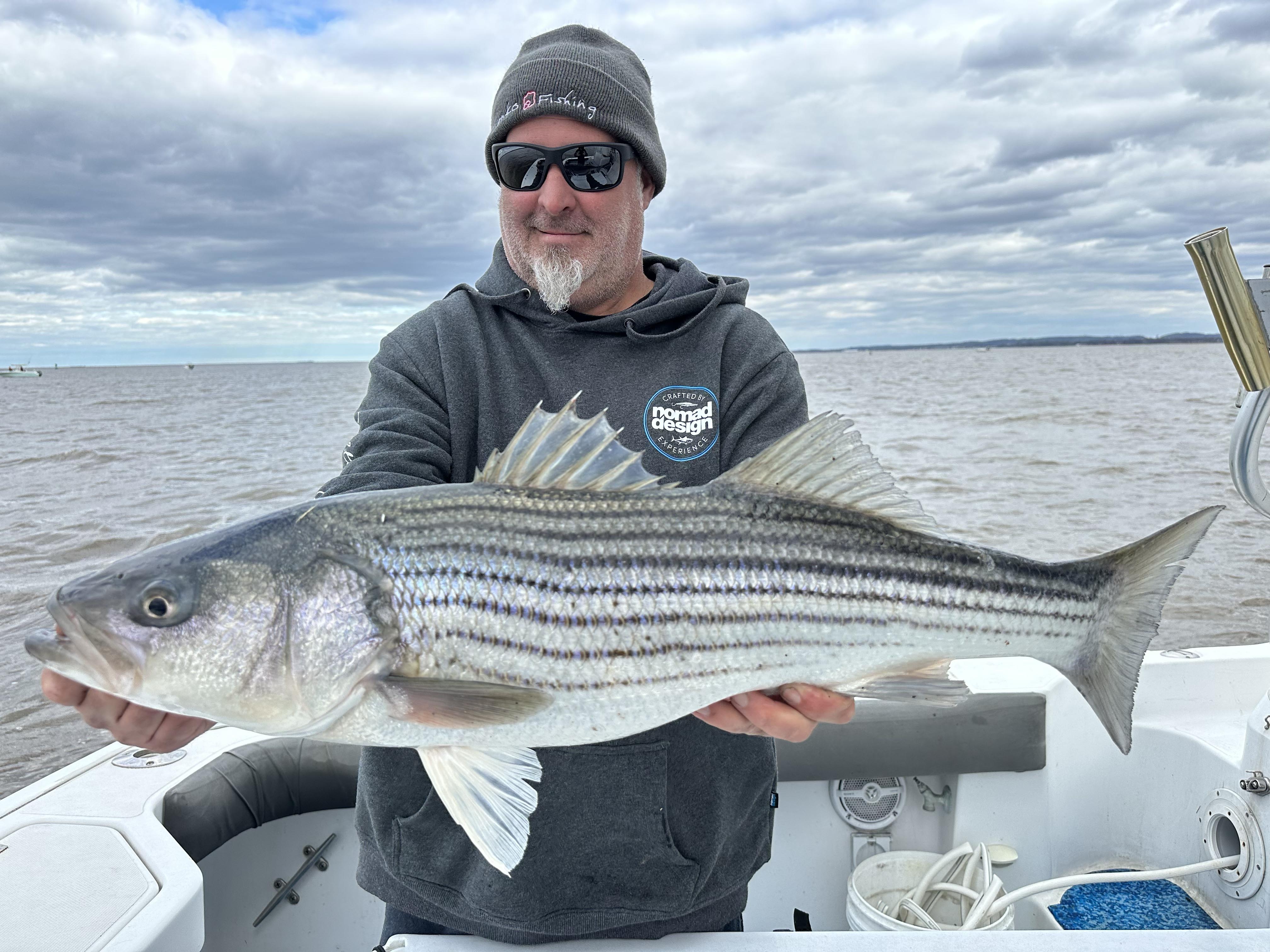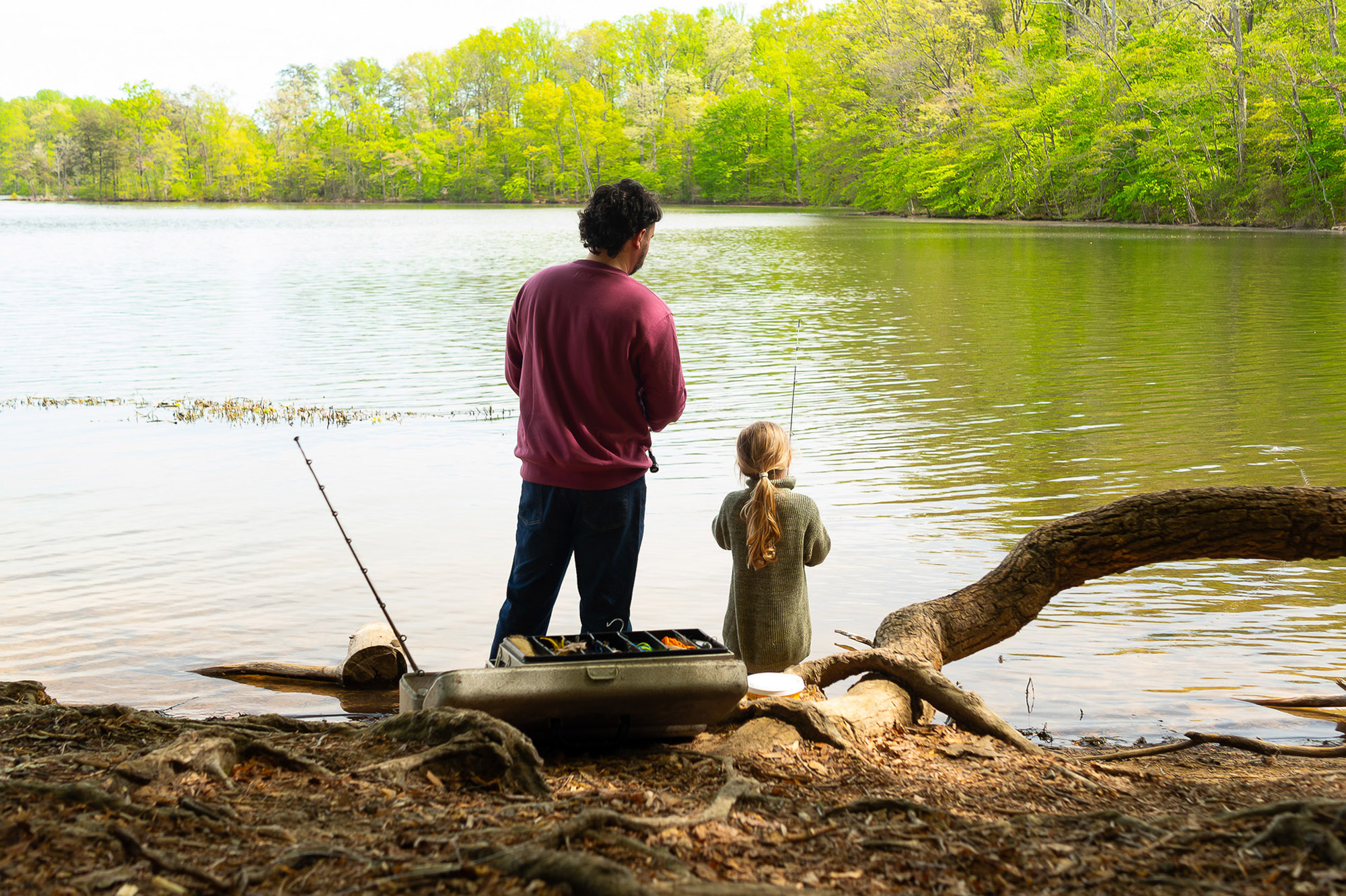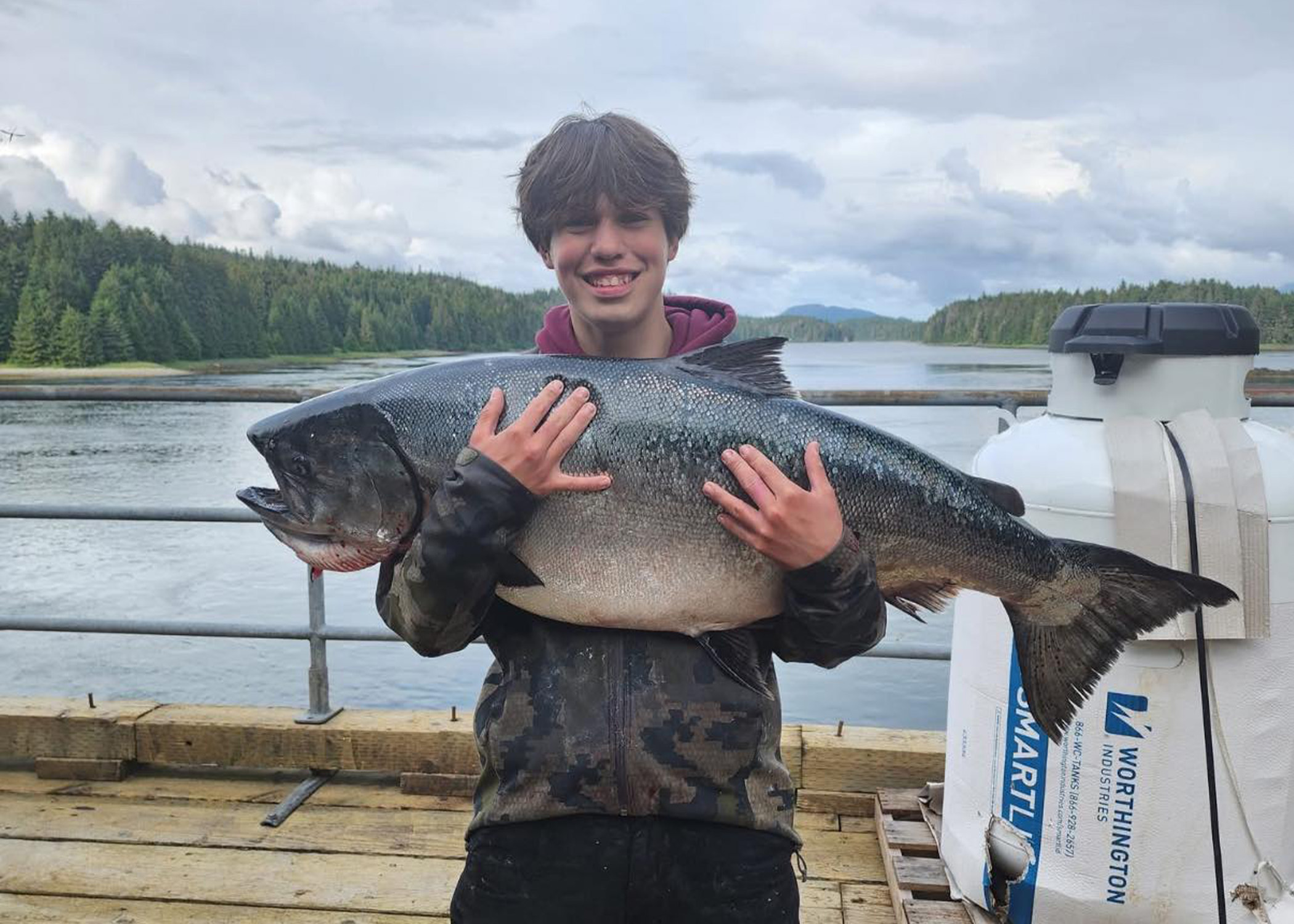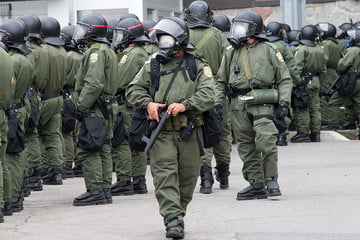Quick Strike Podcast: 3 Critical Things to Know About Stripers in Spring

No saltwater gamefish is more associated with fall than the striped bass. From late September through the winter months, the migration pushes thousands of these fish down the coast from north of New England into the Mid-Atlantic states, and thousands of anglers hit the beach and jump on boats to catch them. But there is plenty of opportunity to wrangle them in spring. It’s just that success requires rethinking your approach because the fish are on a different mission than they are in fall.
Spring striper fishing can be exceptionally rewarding, but also much more nuanced. It’s a shorter season in many areas, and the action is often confined to more niche locations. In veteran charter captain Eric Kerber’s case, that’s Raritan Bay in the New York Bight, though what he experiences here translates to many similar locations up and down the coast. His insight into the behavior and habits of the bass this time of year will help anyone with a boat or fishing from shore make the most of this fleeting — yet magical — season.
Listen to this episode of the Quick Strike Podcast on Apple, Spotify, or wherever you get your podcasts.
Set the Flow to Low
Unlike fall when stripers are migrating south and eating like crazy along the way, their spring behavior revolves around spawning. Stripers are anadromous, meaning they live in saltwater but run up freshwater rivers to breed. Saltwater hot spots this time of year are the staging areas in bays where spawning rivers drain. But Mother Nature plays a huge role in when the fish arrive, and of all the factors that contribute to the kick-off of the run, Kerber believes none is more critical than river levels.
“When you’ve got a river coming into the bay, especially if it’s a smaller bay, the amount of rain you get plays a big role in your success,” he says. “Think of it like adding a new fish to your tank. You can’t just drop it in. You have to let the bag float, then you cut some holes in the bag so the tank water mixes in. You’re giving the fish time to acclimate. Last year we had four inches of rain right when the bass were showing up. If you have that much freshwater pumping into the bay, it creates almost a hard wall where fresh- and saltwater meet. There’s no brackish zone. When that happens, the stripers don’t have time to acclimate, and it sort of puts them in shock.”
Though many people believe a primary catalyst in the spring bite kicking on is the water temperature hitting 50 degrees, Kerber doesn’t think that’s as important as normal salinity levels. He’s had incredible action with water in the 40s, because if the river and salinity conditions are right, the stripers will push in to stage and feed regardless of water temperature.
Current Situation
Striped bass are well adapted for current. They thrive in it, but that doesn’t mean they’ll feed regardless of current speed. In the open ocean, tidal current is less of a factor, but in staging bays you have tidal current and river current flowing out. In many protected bays such as Raritan Bay, the water positively rips during the peak of the outgoing tide. This ultimately means there will be distinct windows of opportunity to catch them, and it’s rarely an all-day bonanza.
“When the current slows down, they seem to bite better,” Kerber says. “I think that has a lot to do with slower current just making whatever bait they’re chasing easier to catch. Even though stripers are built for current, there are days during an outgoing tide that we’re drifting at four miles per hour. Are you going to try to swim in current that fast and catch bait? So, what’s very common in these bays is that you’ll mark the fish the entire tide. They’re there, but you won’t get them to eat until the tidal flow is just right, and that window often doesn’t last long.”
Striking at the very beginning and very end of a tide change is smart in spring, though Kerber notes that slack tide — the brief period when there’s no current at all — rarely produces a lot of fish because they’ll scatter from defined edges and bottom structures they were using to get out of the flow. You need current to congregate the fish, but keep in mind that this time of year they won’t stay congregated for long.
Move It Along
There is no lure, bait, or tactic that is the “juice” in the spring. They’re still stripers and they’ll whack the same rubber shads, spoons, trolled plugs, poppers, and cut baits that they will in the fall. The biggest difference between the two seasons is that fall bass may hold or feed in a specific area for days or weeks, but in the spring, they are constantly on the move. This, according to Kerber, is one of the biggest challenges of chasing staging bass.
“Bites and locations don’t just change by the day in spring, they can change by the hour,” he says. “They’re booking it. They are there to spawn and every fish is going to push up the river, so you might find them stacked in one location today, and that same spot will go dead the next and stay dead until an entirely new school of bass comes in from the ocean. You can have a pile of fish behind a shoal or mussel bed on one stage of the tide, they flip to the other side when the tide changes, then they disappear and won’t come back.”
The bottom line? Be prepared to cover water and shift on the fly in the spring. Likewise, don’t get married to a depth range, because stripers have no problem holding and feeding in very shallow water during staging. This is why spring actually offers land-based and kayak anglers an easier shot at a truly big fish then fall when the bite is centered in the ocean.
Read the full article here









